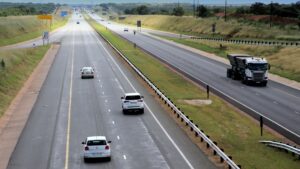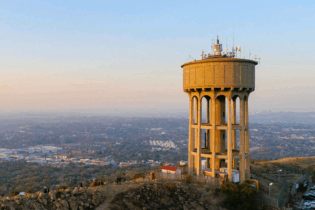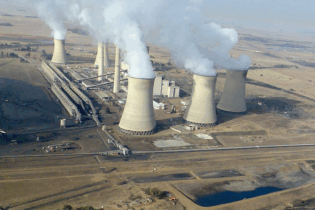Setting a high standard for world-class toll road operations, Bakwena Platinum Corridor Concessionaire manages the N1 from Pretoria up to Bela Bela (90 km) and the N4 from Doornpoort to the Botswana border (295 km). IMIESA speaks to Danie Verwey (DV), Chief Technical Officer, about strategic planning, construction and maintenance interventions.
What are Bakwena’s key responsibilities as the concessionaire?
DV The concession contract between the South African National Roads Agency (Sanral) and Bakwena came into effect in 2001 and ends in 2031. This is essentially a performance-based agreement that requires Bakwena to complete periodic and routine maintenance, plus specific upgrading works. As head of the Technical Department, I’m responsible for the management of the engineering infrastructure. From an overarching perspective, all capital works have been well defined within the initial scope of works as well as over the 30-year concession period. Over the remaining decade of the agreement, that amounts to around R5 billion. In support of this objective, we run an annual pavement assessment programme, supplemented by a detailed traffic assessment of the entire road. Significantly, all funds for construction works are self-funded internally via the revenues Bakwena generates as a toll road business. Bakwena has appointed a long-term operator (acting as a subcontractor) to deal with routine maintenance activities. The latter include grass cutting, accident-related damage to infrastructure, cleaning of stormwater systems, replacement of road studs, upkeeping of fences, chemical spraying, street light maintenance, alien vegetation management, and debris and litter management. The total cost for these activities per annum is around R55.6 million or R145 000 per km (not lane kilometres). For the upgrading component, our forecasted capital expenditure for 2023 is R440 million, entailing major construction works.What are some of the key projects completed to date?
We have recently completed the construction of the second carriageway between Pretoria and Brits. This section is some 28 km long and consists of a 10.9 m wide carriageway, two new bridge structures, plus the extension of five existing bridges and seven major culverts. The project was completed at a total cost of R563.4 million (excluding VAT). If you break it down even further, the cost per kilometre was R16.2 million (excluding VAT and the cost for the larger bridge and culvert structures).Which routes are currently undergoing upgrades?
Two key ones entail major works on the N1 between Pienaarsrivier and Bela Bela Interchange, and the N4 (Section 9) between Ga-Rankuwa and Kameeldrift Interchange, with contract durations of 12 and 18 months, respectively. The scope of works on the N4 project – scheduled for completion in June 2023 – entails the rehabilitation of both carriageways of the N4-9 (km 0.0 to km 20.8), and includes the rehabilitation of the R80, Kameeldrift, Rosslyn and K99 interchanges. On the N4-9 section – originally built around 2001 – the sub-base and base of the slow lane have failed and need to be rehabilitated to a depth of 510 mm and then resurfaced with a 60 mm AC modified binder. In turn, the fast lane will receive crack sealing and patching. The fast lane and shoulder will also receive a fog spray upon completion. The construction cost is around R187.97 million (excluding VAT, CPA and contingencies). Works on the N1 between Pienaarsrivier and Bela Bela Interchange (km 13.4 to km 42.6) are similarly extensive, entailing the rehabilitation of both carriageways. This will include crack sealing, milling of the slow lanes to various depths and widths, replacement with a bitumen treated base, and a 40 mm asphalt overlay across both carriageway widths with rolled-in chips on both lanes and the fast shoulder. Scheduled for completion in July 2023, the construction cost here is R174.4 million (excluding VAT, CPA and contingencies). Both projects serve as prime examples of how Bakwena invests in its assets to deliver the optimum return on investment for its client, while providing road users with the best possible driving experience.How is Bakwena’s upgrade and maintenance strategy determined?
Since our hand-back requirements in terms of the remaining pavement life are very onerous, we monitor pavement performance very closely. Our comprehensive pavement rehabilitation strategy is underpinned by an assessment of all performance indicators – i.e. roughness, rutting, visuals and deflections. In turn, bridges and larger structures are inspected over a five-year cycle and maintained on an annual basis at a cost of between R6 million to R8 million. The structures on the N1 are almost 50 years old; here, we focus on repairing spalled concrete, repairing accident damage and applying protective epoxy coatings. We have partnered with Sanral on their Bridge Management System and data is centralised on their Struman database.Both our upgrade and maintenance strategies are influenced by Bakwena’s comprehensive traffic analysis studies. Forecasting traffic volumes and assessing peak hour flows in the current volatile economic climate is difficult, but you need to run these models to be able to predict the level of service problems.
Has it worked? Bakwena has reaped the benefits from proactively maintaining its network. Larger rehabilitation interventions have been postponed from typical 8-year intervals to 10-year intervals, and we have extended the life of our surface seals by crack sealing and employing rejuvenator sprays. Modern bitumen binders have brought a new dimension to asphalt characteristics. This has been a learning curve from a design perspective over the last decade, but certainly it has provided positive benefits in terms of rut resistance and for pavements exposed to higher traffic loadings (larger than 3 million E80s).What determines the success or failure of a road asset management system?
The basic principle is to know your infrastructure and spend time with it so that you understand the deterioration cycle. Primarily, though, it’s essential to update your pavement management system annually and know the impact of your traffic loading. We monitor overloading every month via the weighbridges at our traffic control centres on the N1 and N4. That helps to keep overloading under control, reducing wear and tear. The lifespan of your road furniture also has to be factored into the overall financial model in terms of routine replacement.How does Bakwena maximise road safety on its routes?
We have adopted safety audits that are aligned with the South African Road Safety Audit Manual (May 2012). By doing so, we have significantly improved road safety by implementing the recommendations from these assessments. The safety audits focus on the possible impact of bridge structures, culverts, underpasses and trees relative to the position of the road. We then apply the appropriate remedial measures, which are usually in the form of crash barrier protection. For new projects, it is vital to adopt these safety principles as part and parcel of the upfront design process.How does Bakwena compare to best-in-class toll concessionaires?
We are industry leaders in Africa – from both a maintenance and toll operation perspective – and champions of the public-private partnership (PPP) model. We’ve demonstrated that PPPs can work successfully to deliver value for both parties. In our case, it’s a road network, but PPPs work equally well in other areas like renewable energy (wind and solar), as well as water and wastewater treatment works. They also provide an off-balance-sheet solution for public clients when applied as a build, own, operate project. South Africa faces a huge challenge to maintain and replace infrastructure, compounded by serious technical skills shortages. Here, PPPs can make a significant contribution by addressing infrastructure backlogs and improving service delivery through outsourced operations and maintenance contracts. Since PPPs are based on bankable business models, projects tend to be executed on time and within budget, and to the highest quality. Another important point is that private entities are not subject to public sector procurement processes. This means that the need to adhere to a ‘lowest bid wins’ policy – often a contributing factor in subsequent project defects and cost overruns – is not a requirement. In my view, PPPs must become a preferred mechanism for the provision of engineering infrastructure in South Africa.And in closing?
The industry is faced with various challenges – especially the uphill battle to maintain infrastructure, exacerbated by bureaucratic red tape. However, our ability to handle these challenges is also a measure of our strength and commitment to make a difference. It’s not difficult to make the right decisions provided we focus on what is important for South Africa from a sustainable infrastructure perspective. In this respect, well-designed and -maintained toll roads make socio-economic sense.







